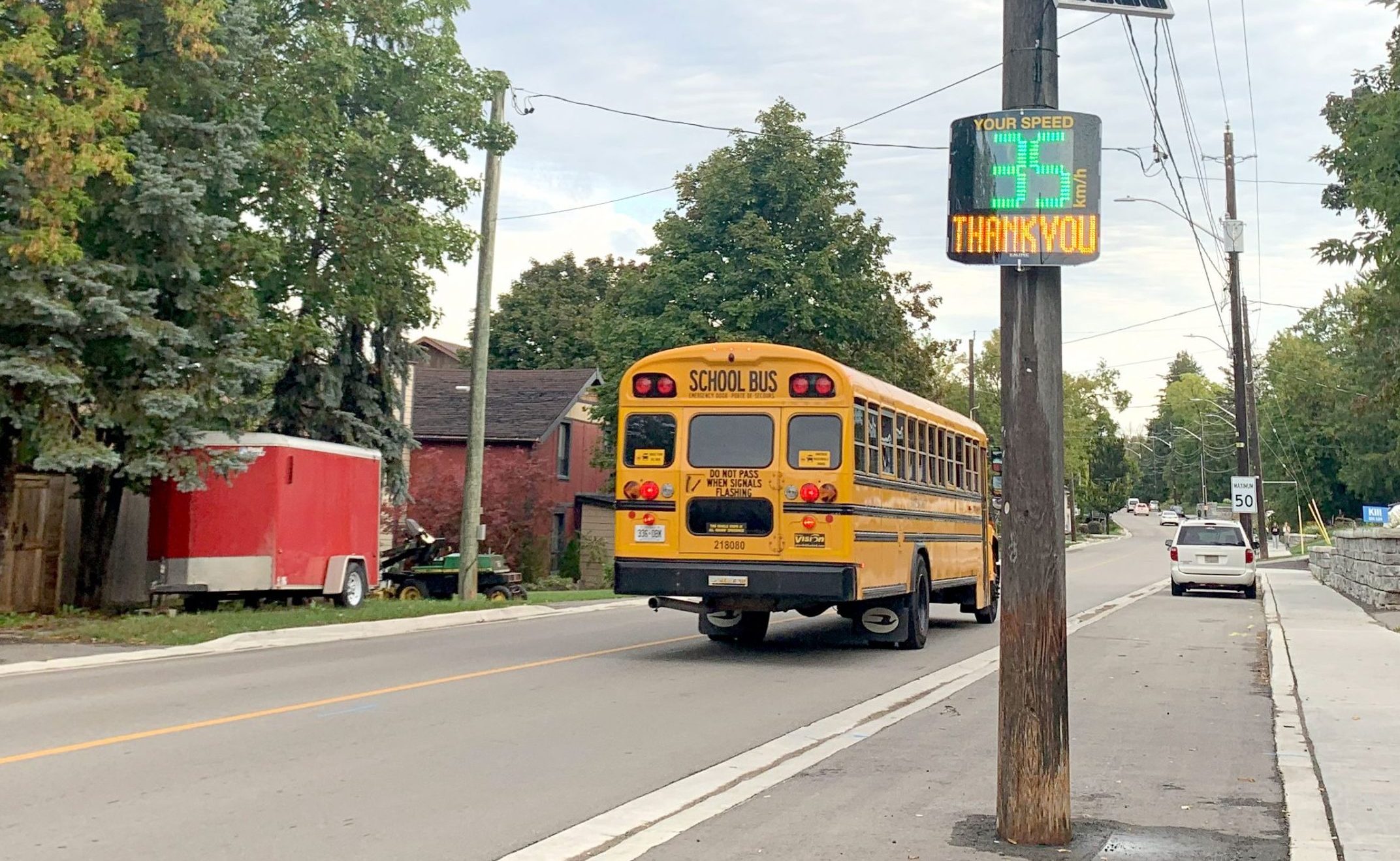GUELPH – Wellington County continues to investigate the potential of automated speed enforcement (ASE) as a part of the solution to concerns about speeding around the county.
Redflex Traffic Systems Canada presented information on its system to the county’s roads committee on March 14.
“Redflex operates in 15 countries and was selected to operate ASE systems in Ontario after a competitive RFP process,” roads committee chair councillor Gregg Davidson told county councillors on March 30.
Davidson said Redflex representatives provided information on the implementation process; setup options include fixed or mobile cameras and required signage.
“Staff will continue to research and provide the committee with details on costs and best locations to implement the camera,” said Davidson.
“Staff will also lead discussions with the lower tier municipalities to gauge their interest in implementation.”
The report from Redflex was in response to a county council motion in February of 2022 that directed staff to research the use of ASE for community safety zones and school zones in the county.
ASE uses technology to detect and record images, with data used to issue tickets to the owner of the offending vehicle.
In their presentation to the roads committee, Redflex officials noted ASE programs in Ontario are a collaborative partnership between their company, a participating municipality, Provincial Offences Act (POA) courts, the Joint Processing Centre in Toronto and the Ministry of Transportation.
Bill 65 – The Safer Schools Act, which received Royal Assent in 2017, permits the use of ASE in school zones and community safety zones where the speed limit is less than 80km/h.
Redflex data indicates initial projects showed an average speed reduction of 30 per cent.
ASE programs have already been implemented in numerous larger centres, including: Toronto, Ottawa, Hamilton, Brampton, Waterloo, Mississauga, London and Oakville.
Redflex officials advised the committee to review existing speed studies or create new ones in areas of concern.
“In order to make the case for ASE, it is important to be able to document and indicate the extent of the problem you are trying to solve,” the company noted in its presentation.
“These studies will also provide you with baseline data to allow you to measure success of your program.”
Councillor James Seeley said he believes the City of Guelph is considering utilizing ASE and suggested the county look into coordinating with the city.
“Have we had a discussion with the City of Guelph, possibly partnering with them? And if not, perhaps that’s an opportunity,” he suggested.
Seeley also asked if costing information was available.
“I had reached out to the City of Guelph. It was late fall last year … My plan is to follow up to see where they are now prior to getting back to the committee,” said county engineer Don Kudo.
Kudo also said he has had discussions with Redflex regarding costs and would be reporting back to the committee on that as well.
“This is a public safety measure and not cost recovery. So, we shouldn’t expect to break even on it,” observed councillor Michael Dehn.
Councillor Chris White asked if school bus stop-arm cameras could be considered along with the automated speed enforcement program.
“Can we possibly look at, since we’re talking about photo radar, who would be responsible for putting cameras on school buses? Now I know, intuitively, it sounds like a school board issue,” said White.
“But it’s not, because it’s enforcement? So I’m looking for either the police services board potentially, or roads can take a look, into what it would take, or what it would mean, to try to get some cameras on the school buses.”
White added, “We all know how important road safety is, we’ve got some great initiatives going on.
“But people passing school buses is unconscionable in my opinion.
“And I think that we need to begin to prevent that as much as possible with these tools.”
“We can certainly have that looked at and see if Redflex also offers that kind of service, or anyone else,” said Davidson.
“If there were cameras that we put on a bus, does it have to be an automated ticketing system?” asked Seeley.
“If the infraction is just captured and the vehicle is able to be identified through the license plate, is that sufficient information for the OPP to investigate and possibly take some enforcement?”
Wellington OPP Inspector Steve Thomas said information supplied from a bus camera could potentially be treated like dash cam footage submitted by any citizen.
“Typically, what would happen if someone had dashcam footage of a violation, they would call the police … really anyone in the general public can, if they have dashcam footage … call the police and say, ‘Hey, I’m bus driver, John Doe, I was stopped at wherever and I have footage of people passing the school bus while the kids are getting off,’” he said.
“And then it would get assigned to our one of our officers who would investigate that and take appropriate action.”
Thomas added he is not actually aware of any automated ticketing systems available for bus cameras.
“I think we also need to say that, just to clarify it, it’s community safety zones and school zones only that this automated speed system is applied to,” noted Dehn.
“That’s correct. That’s the only two places that the province has allowed automated speed enforcement,” said Davidson.




